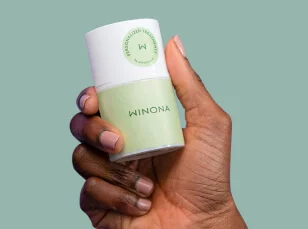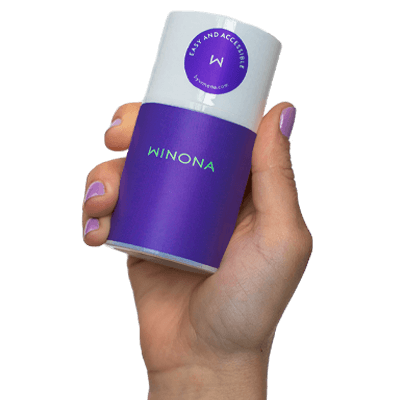Testosterone Replacement Therapy – TRT Benefits and Risks for Women

Testosterone may not immediately come to mind when considering hormone replacement therapy for women. Estrogen and progesterone are the primary sex hormones in women, whereas testosterone is the primary sex hormone in men. That being said, testosterone is also produced in the female body, and it plays an important role in women’s health and well-being.
Testosterone is mainly produced in the ovaries, and levels peak when women are in their 20s. On average, testosterone levels decrease by approximately 50% by age 50. When women have both ovaries surgically removed via a procedure called oophorectomy, levels drop precipitously. Because testosterone has many important functions in female physiology, those functions can suffer when testosterone decreases.
The following are some of the areas in which testosterone plays a key role in the female body:
Libido, sexual response, orgasm, and overall sexual satisfaction
Lean muscle mass, metabolic rate, and weight maintenance
Energy levels and managing fatigue
Brain function: concentration, clarity of thought, and overall cognition
Bone health
Breast health
Skin, hair, and nail health
Replenishing the body’s diminishing reserves of testosterone with testosterone replacement therapy (TRT) can ensure that these functions continue uninterrupted and improve quality of life and sense of well-being. This article will serve to educate on the risks and benefits of TRT.
Say goodbye to hormonal weight gain

Benefits of Testosterone Replacement Therapy
While testosterone plays an important role in many systems and functions of the female body, the following are some of the key areas TRT can affect the health and well-being of women in menopause.
Sexual Well-Being
While decreased sex drive or libido can occur for various reasons, low testosterone levels have been found to be a major risk factor for women over the age of 40. Studies have shown that by supplementing testosterone to youthful levels, healthy sexual desire can return.
Beyond compromising sexual desire, low testosterone levels can reduce the size and sensitivity of the clitoris, which can make it more difficult to reach orgasm or even lead to loss of orgasm potential. Replacing testosterone to normal levels can reverse these changes and protect the ability to achieve orgasm.
Women who replace testosterone levels report increased overall sexual satisfaction and increased quality of life. Sexual satisfaction affects satisfaction in other areas of life, the most direct being an improvement in intimate relationships. This in turn can lead to improved mood, increase in positive self-image, and decreased anxiety.
Lean Muscle Mass, Body Weight, & Energy
Testosterone is important for increasing lean muscle mass - muscles that are densely packed with contractile tissue, rather than higher amounts of fat and connective tissue. Maintaining and increasing lean muscle reduces the risk of injury to ligaments and tendons and improves posture by creating and supporting stronger core and back muscles. Lean muscle also protects bones from becoming weaker later in life by increasing bone density and strength.
A woman with low testosterone could exercise with the same regularity as a woman with optimal testosterone levels, and she would see less improvement in lean muscle mass. When the body’s response to exercise is improved via increasing testosterone, results are more likely to be noticeable; that positive feedback can encourage a more regular exercise routine.
Because testosterone is responsible for increased muscle mass and leaner body mass, it helps with weight maintenance and energy levels. Women with low testosterone are more prone to experience low energy and fatigue. Research studies show that testosterone treatment can decrease overall body fat and increase muscle tone and strength, as well as provide more energy.
Muscle cells are always twitching or moving – even during sleep. Because they are always at work, muscles burn more calories than fat tissue including when at rest. So, the more muscle, the higher the metabolic rate, which means that the body burns more calories while doing very little. Women with more muscle will burn more energy at rest than women of the same weight with less muscle.
The basal metabolic rate (BMR), or resting metabolic rate (RMR), is the minimum amount of energy required to keep the body alive when at rest. This includes physical functions like heart beat, breathing, etc. Any other activities, like walking or running, require additional calories above the BMR.
With increased muscle mass comes increased BMR. Weight loss occurs when the amount of calories consumed is less than the number of calories burned. All else being equal, women with more muscle have a higher BMR, burn more calories at rest, and will lose weight more easily than women with less muscle. This is one of the reasons why it becomes so difficult to lose weight with age. As testosterone drops, the body requires fewer calories. Returning testosterone to normal levels reverses this trend and allows for more calories to burn at rest.
Bone Health
Loss of bone mineral density (osteopenia and osteoporosis) is associated with increased bone-breaking and fracture risk and is an important health concern for women as they age. Osteoporosis can lead to life-threatening bone fractures, especially in the hip. Osteoporosis is also responsible for loss of integrity of the spine leading to the loss of height, fractures of the vertebrae, back pain, abnormal curvature of the spine, and even nerve damage.
Low testosterone in women has been found to be an important risk factor for bone mineral density loss in women. Replacing testosterone to normal levels in women can support bone density directly and via the increase of lean muscle mass to protect weakening bones.
Brain Health
Clarity of thought, concentration, and overall cognition come with normal testosterone levels. When testosterone levels decrease in the menopause transition, the result can be brain fog and other mental health concerns like mood changes, irritability, anxiety, and depression. Returning testosterone to normal levels can treat brain fog, help return brain function to optimal levels, and support mental health.
Personalized hormone treatments. For you.

Misconceptions Associated with Testosterone Replacement Therapy
When TRT is used only to return testosterone to normal levels, side effects are rare and mild if they do occur. The worrisome side effects sometimes associated with TRT like voice deepening, clitoromegaly, and male pattern baldness are only seen as a result of very large doses, when levels are much higher than the threshold normally found in women.
Because there are unwanted side effects associated with taking high doses of testosterone as a performance-enhancing drug, there are common misconceptions about the general use of TRT:
Testosterone is a male-only hormone.
Testosterone is actually produced in the ovaries and found in larger concentrations than even estrogen. It’s essential for women’s health and well-being and performs many important functions in the female body.Testosterone replacement will give a woman masculine characteristics.
It’s only when testosterone is administered in very high doses that there’s risk of side effects like voice deepening or male pattern baldness. Replenishing testosterone to normal levels results in very few negative side effects for women, with some experiencing mild acne or hair growth, but most experiencing none at all.Testosterone replacement grows disproportionately large muscles. Women who take huge doses of testosterone and train to increase muscle mass can transform their bodies; but this will not occur in normal replacement doses used for combatting symptoms of the menopause transition.
Testosterone replacement makes people aggressive.
Replacing testosterone to normal levels will not change a woman’s personality. It can, however, help improve mood and address other symptoms for improved quality of life.Testosterone replacement is dangerous for liver health.
Testosterone is indeed metabolized by the liver, and women with a pre-existing liver condition like hepatitis should not take hormone replacement. It’s also true that testosterone can stress the liver in massive doses. But if a woman has a healthy liver and uses TRT only to replenish the body’s natural levels, it will not affect liver health.
Summary
TRT can be an important part of hormone replacement therapy for women. When used appropriately, the benefits are many and the risks are minimal. With TRT, overall sexual health improves, lean muscle mass can increase, weight loss becomes easier, and energy levels improve. These and other benefits like bone and breast health lead to not only increased feelings of well-being and improved quality of life, but also better long-term health.
